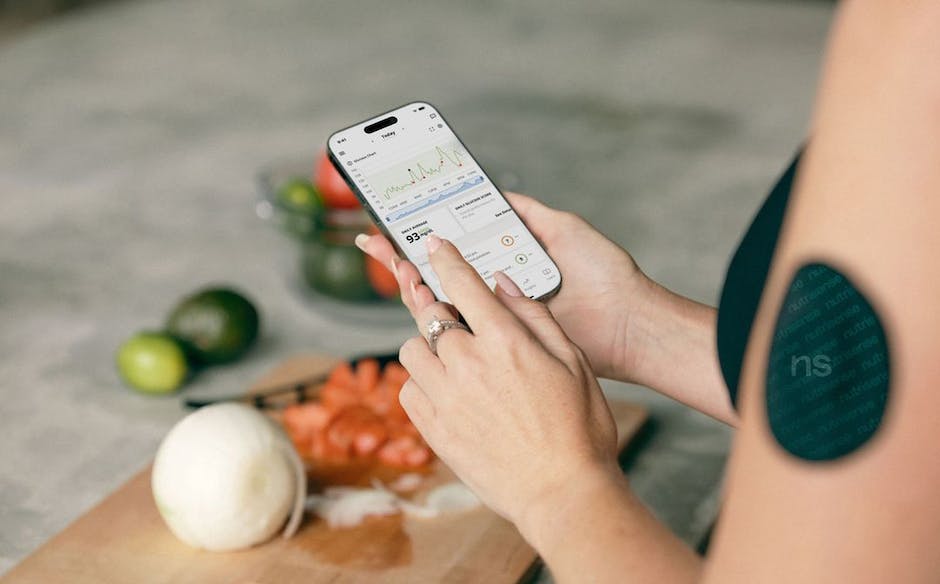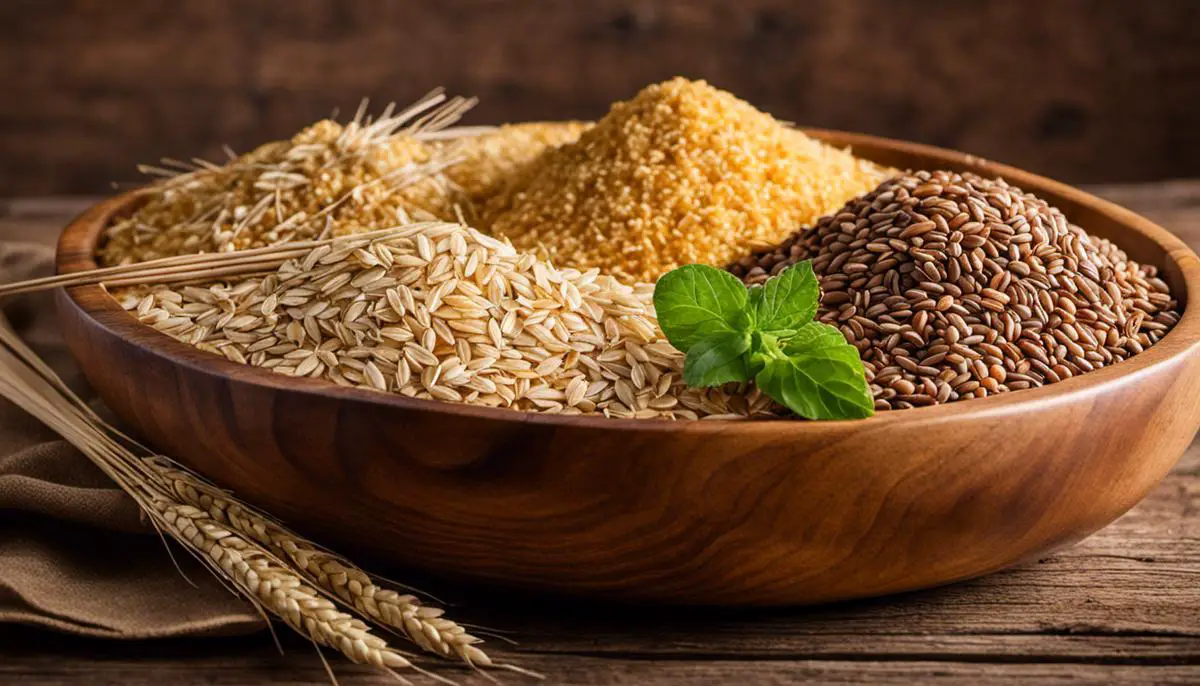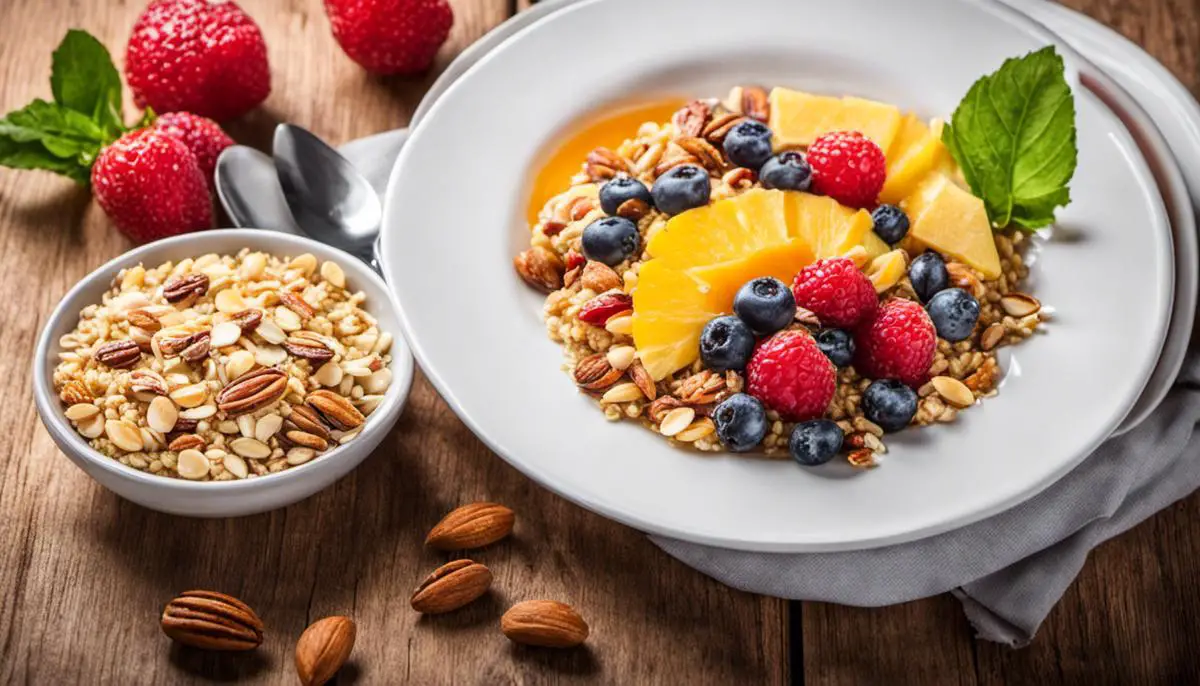The management and control of diabetes is a critical aspect of maintaining one’s health, particularly when it comes to diet choices. Needless to say, the food we ingest directly impacts our blood sugar levels and overall wellbeing. Fortunately, understanding how different foods and nutrients interact with our body can help this process immensely. For individuals living with diabetes, meal planning must be taken with extra caution. One area often overlooked yet essential in a diabetic-friendly diet is the first meal of the day – breakfast. A great place to start is exploring the benefits of incorporating whole grains into breakfast. Whole grains are packed with nutrients and have a lower glycemic index, hence making them a beneficial dietary option for diabetics. Understanding the distinction between whole grains and refined grains, identifying suitable whole grain breakfast recipes, and learning how to personalize them can empower individuals to make more healthful food decisions.
Understanding Diabetes and Nutrition
Understanding Diabetes Management
Diabetes management is a continual process that involves the monitoring and controlling of blood sugar levels. It is essential to maintain blood sugar levels within a targeted range set by health care professionals to prevent complications associated with diabetes. Crucial aspects in the management of diabetes include regular physical activities, taking prescribed medicines as instructed, making wise food choices, managing stress, monitoring daily blood sugar level, and regular visits to healthcare providers.
The Role of Nutrition in Managing Diabetes
Nutrition plays an enormous role in managing diabetes. Understanding which foods to eat, in what quantities, and the timing of meals can significantly help in regulating blood sugar levels. A dietician can aid in constructing a meal plan that fits an individual’s personal health goals, food preferences, and lifestyle. Including a variety of foods in every meal along with managing portion sizes can help in controlling blood sugars, weight, and other medical conditions.
The Glycemic Index and Diabetes
The glycemic index (GI) is a tool that ranks how certain carbohydrates foods may impact your blood sugar levels. The lower a food’s GI, the less it may spike blood sugar levels. Foods with low GI release glucose slowly, resulting in a slower, more steady rise in blood sugar levels after eating and hence, are better for diabetes control. Examples of low GI foods include whole grains, legumes, and vegetables. You may consider incorporating more low-GI foods into your diet to help manage diabetes.
The Impact of Whole Grains on Blood Sugar
Whole grains are an excellent choice for managing diabetes due to their low GI and high fiber content. They are associated with slower digestion, which translates into a slower release of glucose into the bloodstream and helps prevent sudden spikes in blood sugar levels. Examples of whole grains include brown rice, whole grain bread, oatmeal, and quinoa.
Importance of Breakfast for Diabetics
Breakfast is especially crucial for individuals with diabetes as it helps kick start the metabolism for the day and prevent blood sugar spikes and crashes. Traditional breakfast foods can often be high in carbohydrates, leading to increased blood sugar levels. Opting for a high-fiber, low-sugar breakfast can help keep blood sugar levels steady. Whole grains are an excellent option for breakfast, as they have a low GI and are high in fiber.
Whole Grain Breakfast Ideas for Diabetics
Including whole grains in breakfast can help manage blood glucose levels. Here are few ideas:
- Whole grain cereal: Opt for cereals made of whole grains with no added sugars, and add a handful of nuts or seeds for added protein and healthy fats.
- Oatmeal: Oats are packed with fiber and have a low GI. Add berries for sweetness and a dash of cinnamon for extra flavor.
- Quinoa: Quinoa is a protein-rich whole grain. A breakfast quinoa bowl loaded with fresh fruits can be a great start to the day.
- Brown rice: A warm bowl of brown rice with a bit of milk or a dairy-free substitute, a sprinkle of cinnamon, and a touch of natural sweetener like stevia can be a hearty and delicious breakfast option.
Remember, it’s not just the kind of food you eat, but also portion size that matters in managing diabetes. Always consult your healthcare provider or a dietitian for personalized advice.

Identifying Whole Grains and Benefits
Understanding Whole Grains and Their Nutritional Values
Whole grains are cereal grains that consist of the intact and unprocessed entire grain seed, often referred to as the kernel. They are a source of multiple essential nutrients such as dietary fiber, B vitamins (Thiamin, Riboflavin, Niacin, and folate), and minerals (Iron, Magnesium, and Selenium). A few examples of whole grains are Brown Rice, Barley, Oats, Quinoa, Millet, and Whole Wheat.
Differentiating Between Whole Grains and Refined Grains
Whole grains undergo less processing than their refined counterparts which results in the retention of their nutrient-rich germ, bran, and endosperm. On the other hand, refined grains only retain the endosperm after milling resulting in a loss of about 25% of the grain’s protein and many other vital nutrients.
For instance, consider brown rice (whole grain) and white rice (refined grain). Brown rice, having all three parts of the grain, retains crucial nutrients such as dietary fiber and several B vitamins. Contrarily, white rice has had the germ and bran removed, resulting in loss of these nutrients.
A good rule of thumb for distinguishing between the two is the ‘whole’ in its name. If the word ‘whole’ is at the beginning of the ingredient list, that’s a reliable indicator that the grain is indeed whole.
Why Whole Grains are Preferable
Whole grains are crucial for a diabetic-friendly diet as they are packed with fiber which aids in keeping blood sugar levels steady. The American Diabetes Association suggests that at least half of the grains in your diet should be whole grains. This is due to their high fiber content, slowing digestion, and reducing the speed at which sugars enter the bloodstream, thereby preventing blood sugar spikes.
Moreover, whole grains do not only aid in blood sugar control but also hold several other health benefits. They reduce the risk of heart disease, help in weight management, and improve digestive health, making them an excellent choice not just for diabetics, but for anyone desiring a healthy diet.

Recipe Research and Modification
Steps to Search for Whole Grain Breakfast Recipes
The first step to finding whole grain breakfast recipes suitable for diabetics is to perform an online search. Using a search engine like Google, type in “whole grain breakfast recipes” or “diabetic-friendly whole grain breakfast recipes.” Click on search and sift through different websites for recipes rated by user reviews, detailed instructions, and good nutritional breakdown.
Be mindful of sites like the American Diabetes Association or Mayo Clinic, which often provide recipes created specifically for individuals with diabetes. These sites will likely already include suitable ingredient substitutions and portion sizes.
Always make sure a recipe includes whole grains, such as brown rice, whole oats, or whole grain bread.
How to Modify Recipes for a Diabetic-Friendly Diet
Once you find a whole grain breakfast recipe you want to try, the next step is adjusting the recipe to fit a diabetic-friendly diet. Here are some strategies to help:
- Reduce Sugar: Many recipes call for added sugars. Consider reducing the amount used or opt for a natural sugar substitute like Stevia or monk fruit sweetener.
- Substitute Fruits for Sugars: When possible, replace added sugars with fresh fruit or berries.
- Select Healthy Fats: Opt for unsaturated fats over saturated fats. This means using olive oil instead of butter, for example.
- Go for Lower-Sodium Options: Keep an eye on sodium content. Opt for low-sodium ingredients when available.
Understanding Portion Sizes
It’s essential to understand that portion control is crucial for managing diabetes. Always check recommended portion sizes and adjust accordingly.
For example, common serving sizes of whole grains or starchy vegetables are half a cup or one slice in the case of whole grain bread. Non-starchy vegetables have more leeway, usually around one cup. For proteins, common serving sizes are about the size of a deck of cards or approximately three ounces.
Consider using measuring tools like a cup or digital scale to ensure accurate serving sizes, particularly when following a new recipe.
Remember, managing diabetes requires regular communication with your healthcare provider. Always consult with them when making any significant changes to your diet. They can provide personalized advice based on your health and medical history.

Practical Applications and Testing
Choosing the Right Ingredients for Diabetic-Friendly Whole Grain Breakfast
Begin your recipe creation process by choosing the right ingredients. As a diabetic, it is essential to incorporate whole grains in your breakfast since they provide essential fiber and keep your blood sugar levels stable. Go for whole grain options such as steel-cut oats, quinoa, barley, or whole grain breads. Additionally, add in foods with protein such as eggs, dairy, nuts, and seeds. This will help you feel full and maintain steady blood sugar levels.
Experimenting with Different Whole Grain Breakfast Ideas
Now that you have your ingredients, it’s time to experiment with different recipes. For example, consider making a heart-healthy porridge using steel-cut oats, flaxseeds, and walnuts, then sweetening it lightly with blueberries and a touch of honey. Alternatively, prepare a quinoa breakfast bowl topped with almond milk, chia seeds, cinnamon, and fresh fruits. You could also scramble some eggs and serve them with slices of whole grain toast, a small avocado, and a side of mixed berries. Make sure to portion appropriately, as serving size is vital in controlling your carbohydrate intake.
Tasting and Adjusting Recipes
After trying out a recipe, taste and adjust it to suit your preferences. Are there certain flavors that feel overwhelming or underwhelming to you? Experiment with different spices, herbs, or sweeteners to find the right balance. For instance, if a porridge is too bland, try adding some cinnamon, nutmeg or other diabetic-friendly spices to enhance the flavor. However, be careful not to add too much sweetener, even if it’s considered safe for diabetics. Moderation is key.
Making Dietary Adjustments
If the recipes need to be adjusted due to dietary needs, do so accordingly. For example, if you’re lactose intolerant, substitute any recommended dairy products with lactose-free or non-dairy alternatives. Similarly, if you’re allergic to a certain type of nut used in the recipe, simply substitute for another type of nut or seed.
Documenting the Process and Result
Finally, document the process of creating each recipe and the outcome. This could include noting down the ingredients used, the method of preparation, the taste, any changes made, and the effect on blood sugar levels. This documentation will serve as a reference for future preparations, helping you better understand which ingredients or foods work best for your condition.
In summary, creating whole-grain breakfast ideas for diabetics entails choosing the right ingredients, trying out various recipes, making necessary adjustments based on taste and dietary needs, and documenting the process for future use. By following these steps, you can enjoy a hearty, healthy breakfast that caters to your diabetic needs.

Having the knowledge and skills to prepare tasty, nutritious, and diabetes-friendly whole grain breakfast recipes is empowering. It promotes independence and positive behavioral changes towards better health. As one navigates through the process of cooking, experimenting, and adjusting recipes to suit personal or dietary needs, not only does it diversify their breakfast options – it also serves as a valuable learning experience. Partaking on this journey of discovering various whole grains, their benefits, and the many ways they can be incorporated into our meals, particularly breakfast, is an essential part of managing diabetes effectively. Over time, it becomes second nature, effortlessly building a healthier breakfast routine that aids in managing blood sugar levels. This is so much more than just cooking – it’s about taking control of one’s health and thriving while doing so.
